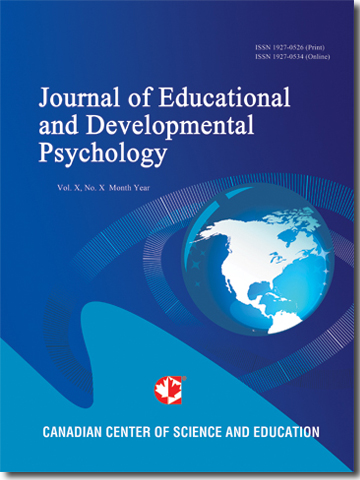Using Semi-Projective Doll Play Methods to Classify Middle Childhood Children Into Four Attachment Types: Types Associations With Distinctive Psychosocial Adaptation
- David Granot
Abstract
This research presents an adapted version of the Attachment Doll Story Completion Task for children in middle childhood (ADSCT for m-c), a measure for classifying children’s representations of mother-child attachment relationships into four attachment types: secure, avoidant, ambivalent, and disorganized. The ADSCT enables interviewers to partially circumvent the sophistication and defensiveness of middle childhood children's story completions. A sample of 185 children in the 4th and 5th grades, and 50 mothers of children from one 4th and one 5th grade class of that sample participated in the study. Children underwent the ADSCT for m-c procedure. Homeroom teachers, classmates, and the child reported on the children’s psychosocial adaptation. A sub-sample of the mothers completed measures of maternal caring attitudes and practices. Associations between the different attachment types and distinct forms of adaptation showed that secure attachment exhibited positive social relationships and a low level of psychosocial and behavior problems; disorganized attachment showed the poorest adaptation, manifested in psychosocial problems, behavior problems, social problem, aggressiveness, and victimization. Avoidant attachment exhibited social problems, peer rejection, behavior problems, and compulsive thought. And ambivalent attachment showed social vulnerability, and intermediate level of adaptation, between the better functioning of the securely attached and the problematic functioning of the insecurely attached. Concurrent validity of the ADSCT for m-c with maternal attitudes and practices, and discriminate validity with reference to key cognitive variables were good.
- Full Text:
 PDF
PDF
- DOI:10.5539/jedp.v8n2p1
Journal Metrics
(The data was calculated based on Google Scholar Citations)
1. Google-based Impact Factor (2021): 1.11
2. h-index (December 2021): 29
3. i10-index (December 2021): 87
4. h5-index (December 2021): N/A
5. h5-median (December 2021): N/A
Index
- Academic Journals Database
- CNKI Scholar
- Copyright Clearance Center
- CrossRef
- Elektronische Zeitschriftenbibliothek (EZB)
- EuroPub Database
- Excellence in Research for Australia (ERA)
- Harvard Library
- Jisc Library Hub Discover
- JournalSeek
- JournalTOCs
- LIVIVO (ZB MED)
- LOCKSS
- MIAR
- Open Access Journals Search Engine(OAJSE)
- PKP Open Archives Harvester
- Publons
- ROAD
- Scilit
- SHERPA/RoMEO
- Standard Periodical Directory
- Stanford Libraries
- Technische Informationsbibliothek (TIB)
- UCR Library
- UoB Library
- WorldCat
- Zeitschriften Daten Bank (ZDB)
Contact
- Carol WongEditorial Assistant
- jedp@ccsenet.org
